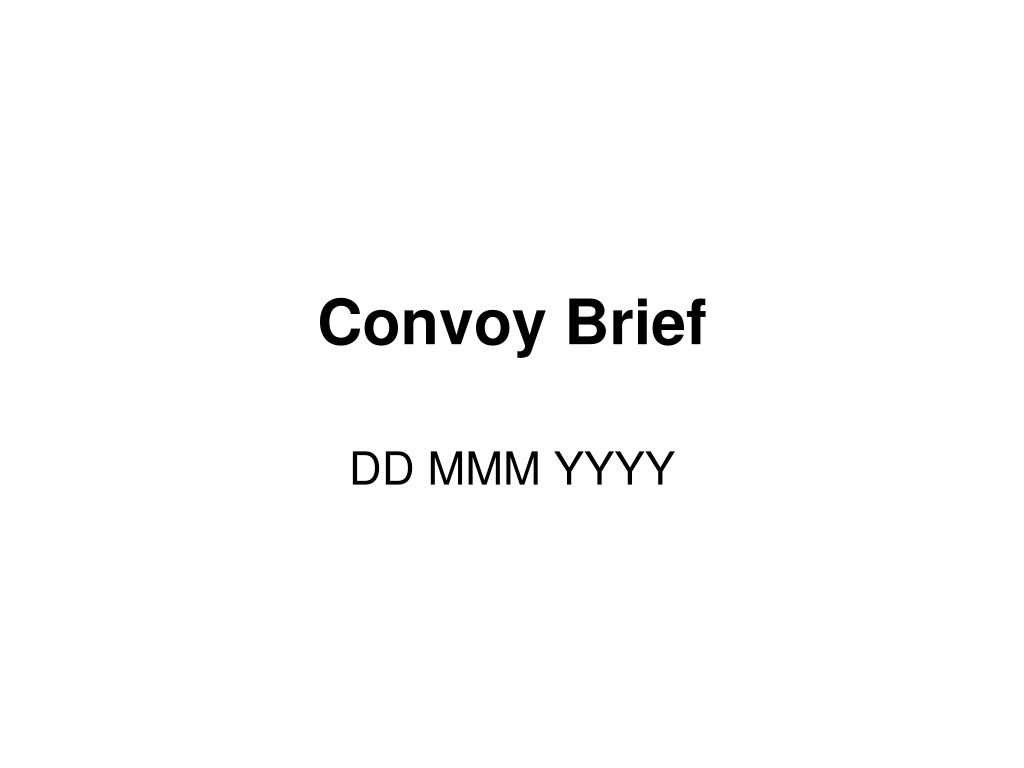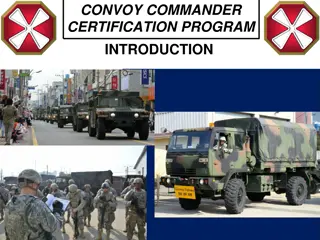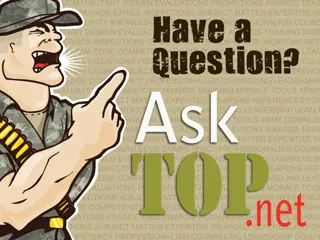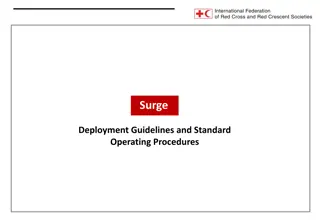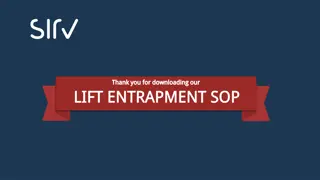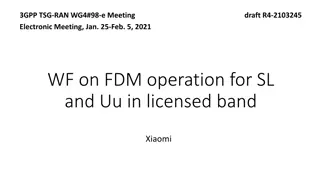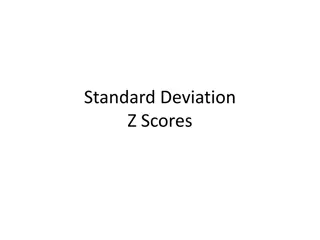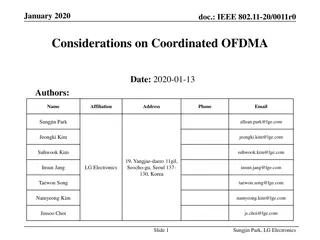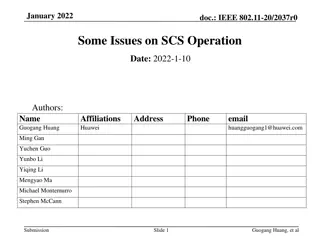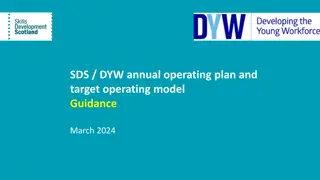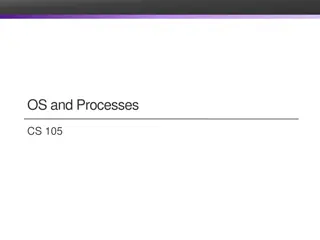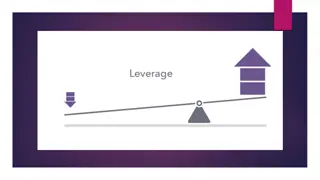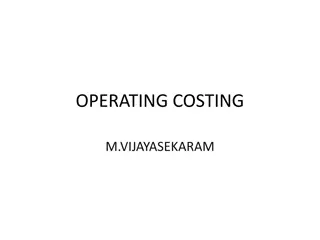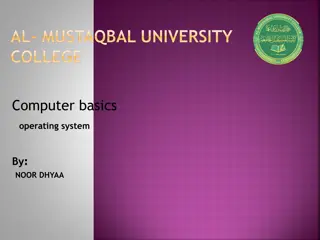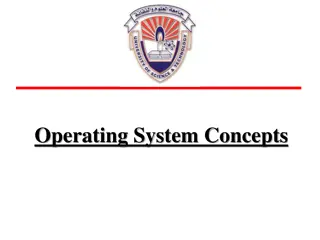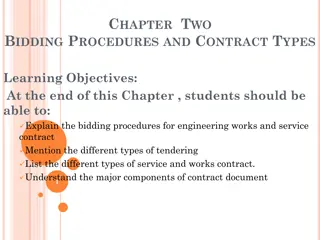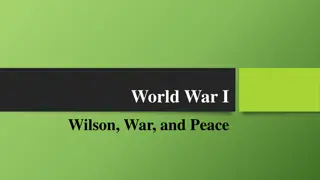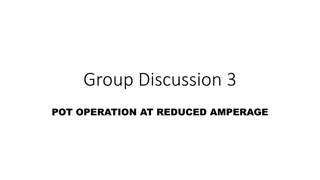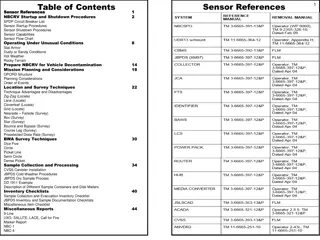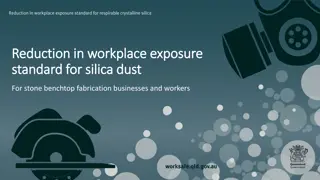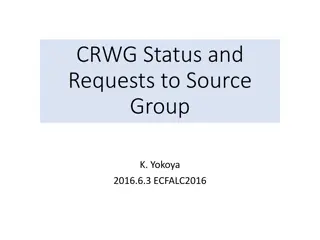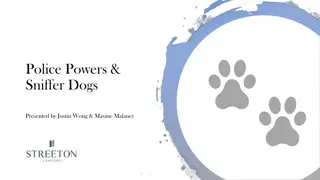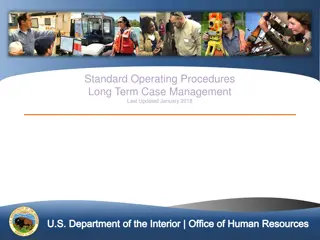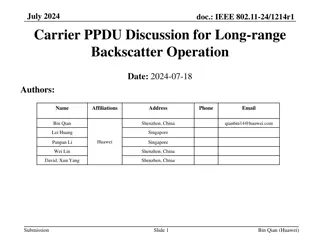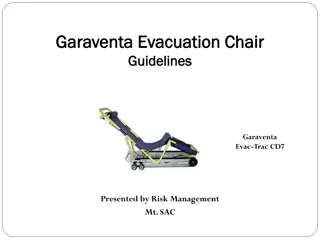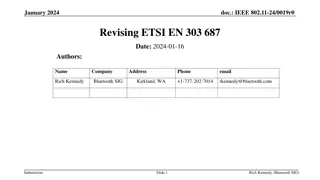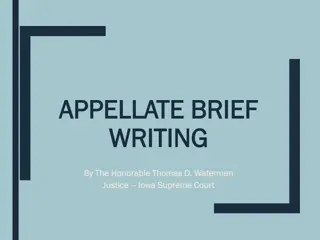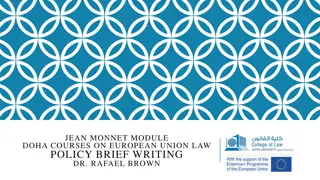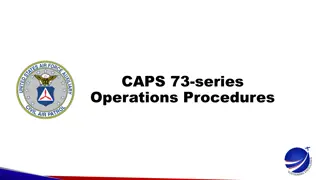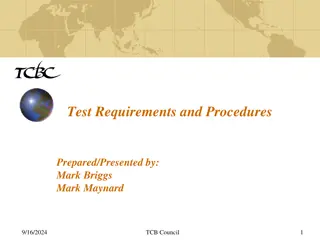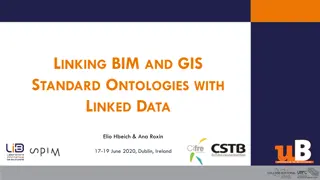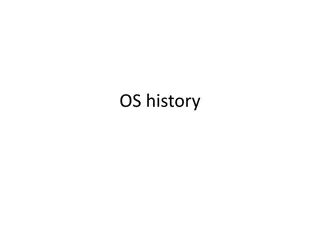Convoy Operation Brief and Standard Operating Procedures
Detailed information on convoy briefing, roll call, agenda, standard and special brief checklists, and standard operating procedures for military convoy operations in potentially hostile environments. The content covers essential guidelines and protocols including route planning, contact actions, vehicle recovery procedures, MEDEVAC procedures, convoy speed, SOP requirements, detainee handling, and rules of seizure. The emphasis is on security, agility, vigilance, and situational awareness to ensure the safety and success of convoy missions.
Download Presentation

Please find below an Image/Link to download the presentation.
The content on the website is provided AS IS for your information and personal use only. It may not be sold, licensed, or shared on other websites without obtaining consent from the author. Download presentation by click this link. If you encounter any issues during the download, it is possible that the publisher has removed the file from their server.
E N D
Presentation Transcript
Convoy Brief DD MMM YYYY
Special Brief Checklist In addition to the standard convoy brief, the following info must be covered Route to be taken using a map that covers the entire route Actions on contact Vehicle recovery procedures SIGACTS on that route during the past 24 hours Conduct of a radio check with higher HQ and other convoy vehicles MEDEVAC procedures Current weapons status and any changes to the status during the convoy Convoy speed Back brief with questions
Standard Operating Procedure All vehicles will have an SOP, CLS Bag, Bulk Fuel, Bulk Water, Hand Held Smoke,VS-17 panel, Map or Plugger, ICOM or Motorola between vehicles, ammunition basic loads for rifles and automatic weapons and FM Communications Every night convoy will have NODs (consider driving blacked out) with extra batteries , Hand Held Illumination, and Strobe (if available). Speed is security, move quickly while driving aggressively using various routes to the same locations. Stay on road do not use medians, as IEDs can be buried easily in sand. If possible, keep an Iraqi vehicle in front of you and travel where they do so that they act as a minesweeper of sorts. Be highly suspicious of traffic circles, bridges and overpasses, these are very effective natural chokepoints for ambush. Treat all stopped vehicles as a threat. Lone Iraqis on the road may be waiting for a ride- or they may be involved in a terrorist activity Always avoid traveling over objects in the road as they may conceal IEDs. If practical, change lanes and break convoy formation while under overpasses to prevent objects from being thrown down on your vehicle. If held up in traffic, TC should dismount, the longer you are there the more men should dismount to build a perimeter.
DETENTION OF CIVILIANS may be detained if there is reasonable belief that the person is or was engaged in criminal activity; possesses information important to, or interferes with, coalition forces or is on a list of persons wanted. Criminal activity includes but is not limited to: Assault on coalition forces; murder; rape; kidnapping; arson; aggravated assault; any crime with a weapon; burglary; housebreaking; larceny; petty theft; DUI; prostitution; destruction of property; simple assault; threat of terrorism; harassment; drugs; stolen property; auto theft; aiding, abetting, conspiring, or soliciting to commit any of the aforementioned; violating curfew (2300-0400); drunk and disorderly; traffic violations; violating administrative orders; weapons in public; carrying concealed weapons. Have detainees needing medical care treated under guard at nearest medical facility, then transport to detention center. RULES OF SEIZURE- Document all seizures on Apprehension Card (Tag em) Give one card to owner of property. Second card is maintained in BOC. The third card is attached to the belongings. Message to BN S-2-all seizures report to RTO, record in SIGACT. Belongings consolidated at BOC. If no tags are available use a DA2062. Specific Items Vehicles: report to S-2 with Make, Model, Year, and VIN. Knives and Clubs: CDR s discretion. Cash: Commonsense check. If it seems like too much money, dig deeper. If it feels right then they are free to go. If you have REASONABLE suspicion that they are involved in illegal activities then detain them. Do not just take their money, have a reason. Confiscate: Small Arms up to, including, 7.62 rifles, shotguns, pistols may be possessed in home/ place of business they may not be taken in public. Arms in vehicles not authorized without a TWC confiscate them. Temporary Weapons Cards: The Commander may issue to anyone who needs to carry a weapon. Police do not need one on duty. After hours to carry a weapon they must have a TWC with them. NO firing of weapons in city. Maps and surveillance products of US positions or US passports, identification, equipment, paperwork, uniforms without a valid reason. Drugs and paraphernalia. More than 8 of thin wire, batteries, trigger devise (bomb making materials) NO one under 18 may own a firearm. Common sense approaches, similar to ROE Is it CONTRABAND or evidence of crime? Is it ILLEGAL (weapon larger than 7.62)? Does it look or seem STOLEN? Is it of intelligence value to US Forces? CHECK POINT PROCEDURES Authorized to stop all civilian traffic to search. Stop vehicle with 25m of stand off distance. Passengers get out of vehicle at a designated point. Driver open doors, trunk. Passengers exit vehicle arms up. Once out, passengers lift shirt to show waist. If deadly threat use deadly force. Cover, aim, shoot. Call HQ if occupant claims to be a cleric or diplomat. PROFILING as of 29 JUN 03 Stop & search the following vehicles Vehicles with tinted windows Dark colored Mercedes Benz (Navy Blue / Green) Red sedans Green Hyundai sedans Blue/Grey KIA vans-all males. Not concerned if family/women/kids. Men wearing all black Men w/ beards and no mustache Soldiers at a checkpoint stop a car; find a cell phone, briefcase, and map. It is not a crime to use a cell. But, if there is evidence the phone was used to conduct surveillance on US Forces, seize the phone. Similarly, it is not a crime to use a map while driving. If the map has locations of US forces, safe houses, or sensitive information, seize it. Open briefcase. If it contains contraband, seize it. If it contains excessive money, question the individual. If the story is believable and he has committed no other offense, release him and his property. If the story is not believable or there are other reasons to be suspicious, seize property and detain individual.
Generic Reaction to Contact Drill for Vehicles and Personnel Upon contact, immediately exit the vehicle on the opposite side of the contact Consolidate on the far side of the vehicle, and all immediately return fire and gain fire superiority, particularly the personnel with automatic weapons The number 1 man will report the incident and all available information to higher ( if exiting on the reverse side of the vehicle, the number 2 man will be the reporter ) Once fire superiority has been established and the SITREP has been called in, the next step is to secure the AO Once the AO is secured, begin assessing and treating the casualties and coordinate for MEDEVAC if necessary Automatic weapon Reports to higher 7 5 3 1 Automatic weapon 8 6 4 2 IED And Small Arms Ambush Direction of Travel
